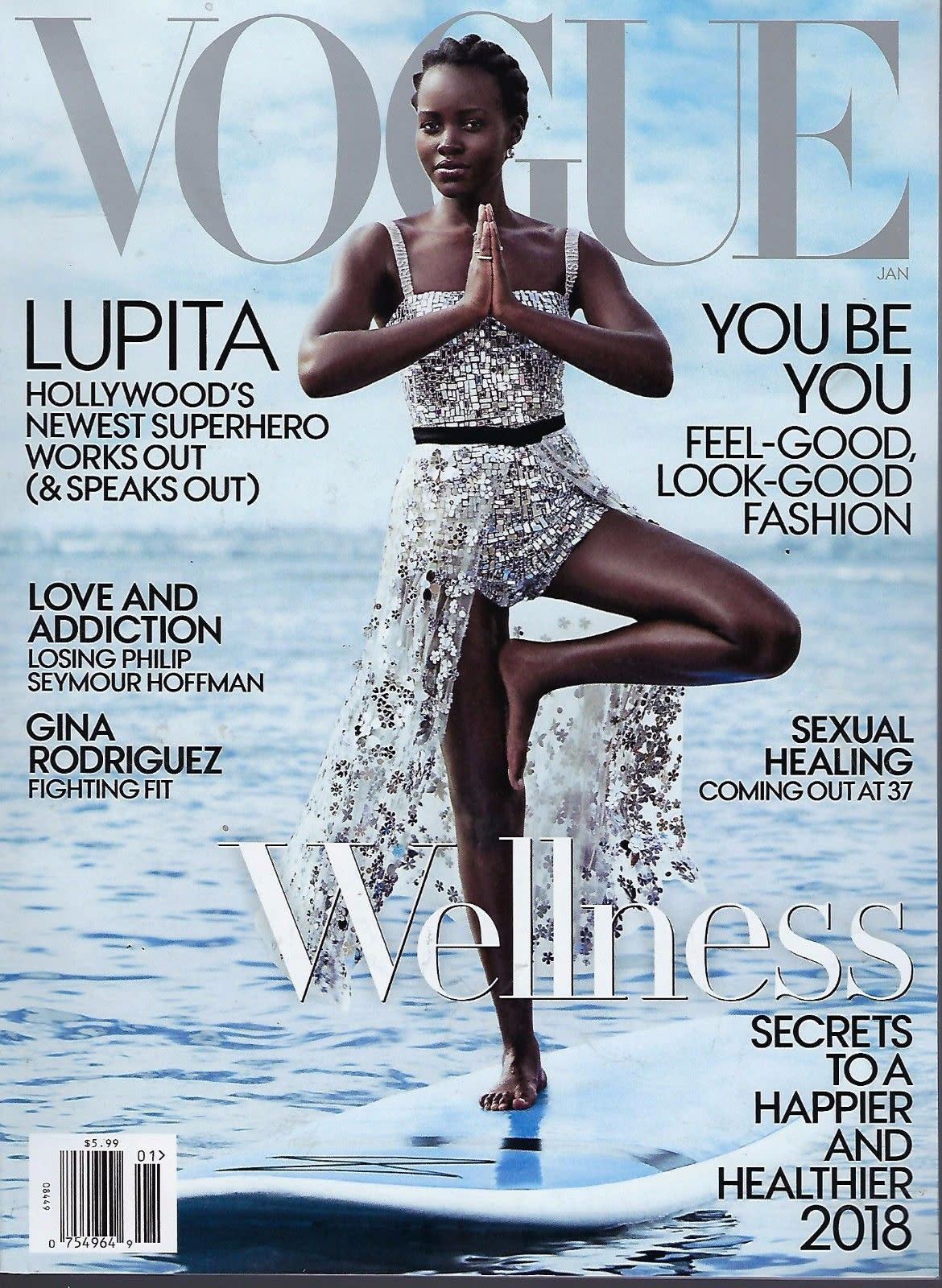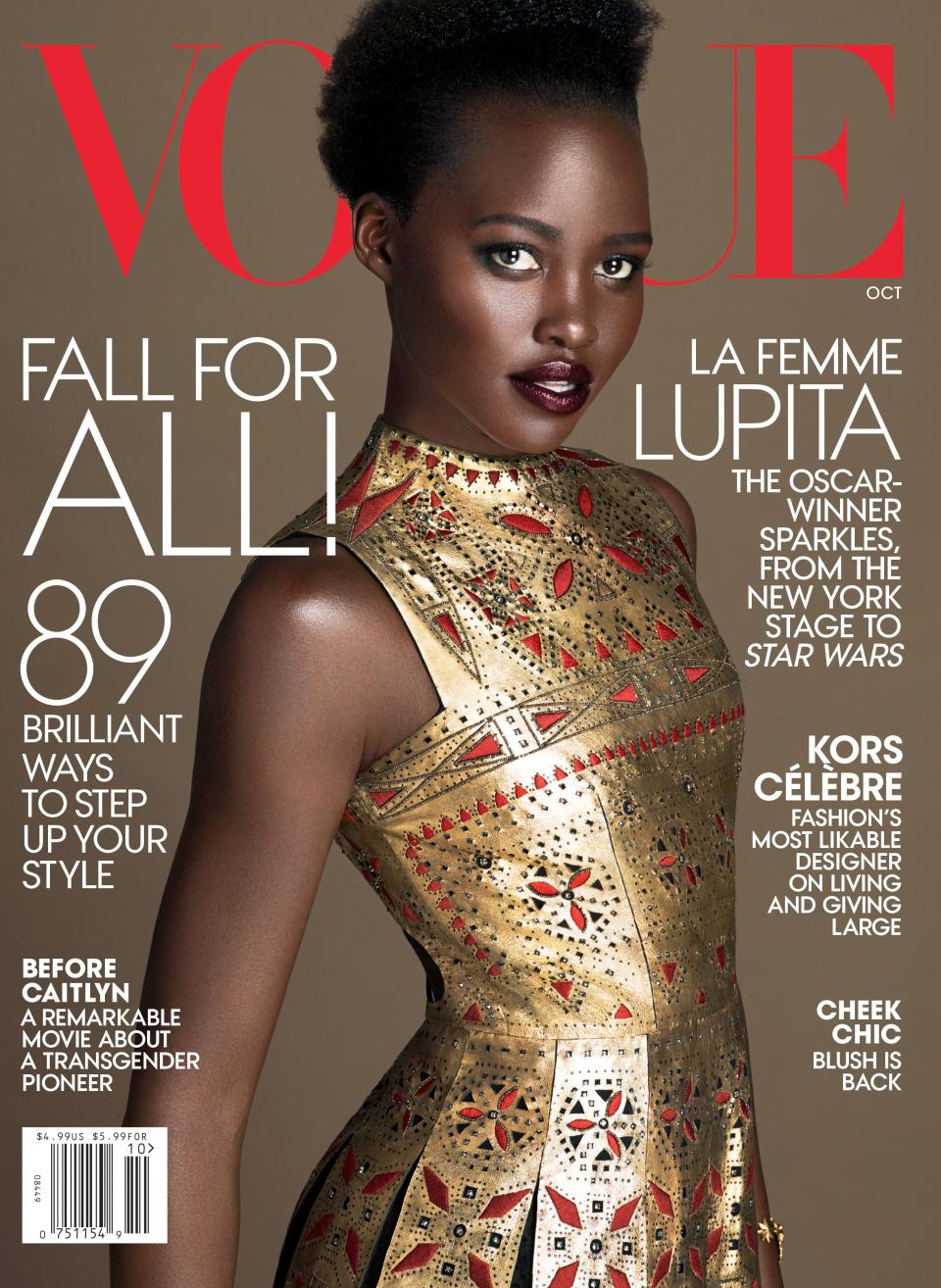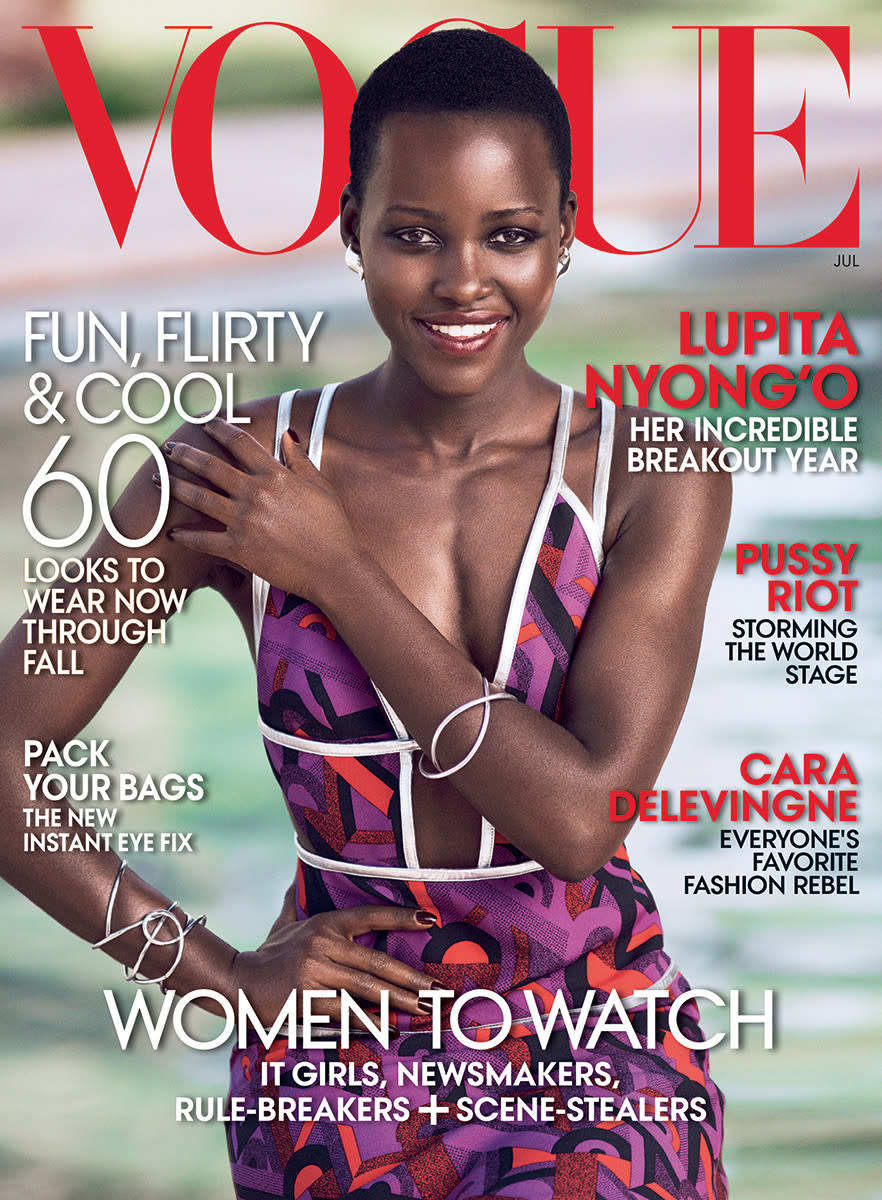Lupita Nyong’o has more Vogue covers than Michelle Obama, Beyoncé, and Rihanna in 3 years. Why?

Actress Lupita Nyong’o, who first broke into Hollywood in 2013 for her Oscar-winning role in 12 Years a Slave, is featured on her fourth U.S. Vogue cover for the January issue.
The image, which was revealed on Vogue’s Instagram page on Monday, was met with praise by most, though a few readers wondered, “Lupita, again?”
None seemed bent on disparaging the cover that Swedish photographer Mikael Jansson shot, showing Nyong’o wearing a silver-embellished Christian Dior gown while balancing on a surfboard for the magazine’s wellness issue.
no shade but didn’t Lupita have a Vogue cover just this year? 7 billion people in the world and Vogue is still recycling the same 5 woman in Hollywood but I guess ♂️
— Denzel. (@fauxdenzel) December 7, 2017
But some raise valid points: Why Nyong’o for the fourth time in roughly three and a half years — a frequency not matched by any other Vogue cover stars? While Anna Wintour famously started replacing fashion models with high-profile actresses and celebrities on the magazine’s covers in the 1990s, many of the same faces have begun reappearing on the covers over the past decade.
Counting titles dating back to the early 2000s, Rihanna has also had four Vogue covers (the only other black celebrity to have as many) over a five-year period; Beyoncé and Michelle Obama have three each. Sarah Jessica Parker and Charlize Theron have the most Vogue covers — six each — of any actresses, though it took them each more than four years to get to four covers alone.
Cover choices aren’t completely arbitrary. Typically, a cover model is chosen (months in advance) because she’s promoting a new project or she’s trying to bolster or rework her public image. Considering the former, Hollywood studios are often behind the push to promote new and existing actors to megastar status with the clout of, say, a Vogue cover.
“Mr. Benza and Mr. Weinstein were exploiting a longstanding system of favor-trading between the press and the movie business,” wrote the New York Times in its second major Harvey Weinstein story exposing the producer’s “complicity machine.” “Gossip writers need a stream of insider scoops, industry beat reporters need exclusives on the next big deal, and glossy magazines need celebrities who can drive newsstand sales.”

Interestingly, there’s no mention of Weinstein in the new Vogue cover story about Nyong’o, despite the timeliness surrounding the conversation around sexual harassment and the actress’s own New York Times essay exposing her experience with Weinstein. Instead, Nyong’o is promoting her new movie, Black Panther, to be released nationwide in January.
It’s possible that the Vogue print story was completed before Nyong’o published her Weinstein account in the Times, though the digital version of the Vogue cover story certainly could have been amended to reflect the experience. According to professor Charles Whitaker, associate dean at Medill Journalism School at Northwestern, monthly magazines typically work on a three-month lead time, but the “likely scenario” for excluding a discussion about Weinstein in the Vogue story “is that her reps said she’s done talking about [him,] and editors bowed to that. Celebs wield a lot of control when it comes to dictating the topics that are off-limits when they consent to doing these covers.”
Vogue did not respond to Yahoo Lifestyle’s requests for comment for this story.
Still, there are plenty of black celebrities promoting new movies and art projects in 2018, all with enough commercial appeal to sell magazines nationwide — Nyong’o’s Black Panther co-star Angela Bassett; Proud Mary with Taraji P. Henson; Oprah Winfrey or Ava Duvernay for A Wrinkle in Time; the musician SZA, or any one of these 17 women who may not be promoting new work but are worthy of their own Vogue covers nonetheless.
Of course, fashion magazines are a business, and there are some faces (and their corresponding social media pages) that all but guarantee higher sales. But neither stellar newsstand sales nor social media followers apply to Nyong’o, whose best-selling Vogue cover was for July 2014, with 169,984 single copy sales, according to the Alliance for Audited Media, and whose Instagram page has a mere 4 million followers.

Compare that to the bona fide cover queen Rihanna, whose April 2011 cover sold 386,311 single copies — whose Instagram page has 56.8 million followers — or Beyoncé’s September 2015 cover, which sold 369,090 copies. To be sure, September issues are traditionally the most popular of the year and attract the biggest advertising dollars. (Fun fact: In Vogue’s latest cover story on Nyong’o, she mentions an upcoming project in which she might work with Rihanna, and one can just imagine the cover that would make.)
“This is Vogue after all, I don’t think they play by the same rules as some of the typical newsstand magazines,” says Caysey Welton, content director at The Folio: Group, a magazine dedicated to media industry trends, of Nyong’o’s four covers. “Nyong’o is fashion-savvy, but she is also a thought leader and has been very outspoken about how we as a society define beauty. If this were People, Us Weekly, or another entertainment or celebrity title, I don’t think she’d have more cover spots than Beyoncé and Rihanna, because they have different brand objectives.”
Professor Whitaker agrees: “While Nyong’o and Rihanna are both style icons, Nyong’o I think resonates across a wide demographic swath (in terms of age), which would make her more of a newsstand draw (young people traditionally don’t buy magazines on newsstands). I think Rihanna appeals more to a slightly younger, non-magazine-buying audience.”
Despite any measure of popularity, featuring a recurring cast of women of color on American Vogue could be viewed as tokenism. The move is poignant in a year in which diverse representation across the biggest fashion magazines in the country was down compared with last year, according to Fashionista.

“There’s one part of me that celebrates [Lupita] on the cover, because it’s continuously a different representation from what you see in other magazines,” says Alexis McGill Johnson, executive director and co-founder of the Perception Institute, a consortium of researchers and strategists focusing on diversity and civil justice. “But I do recognize that if they — Vogue — are arbiters of taste, of who is in and not, they must offer a diverse enough range of beauty.”
To be fair, American Vogue’s track record for inclusivity is far better compared with British Vogue and its former editor Alexandra Shulman. Shulman, who is British Vogue’s longest serving editor-in-chief, left the magazine over the summer, but with what some could view as a lack of grace. Shortly after her departure from Vogue, Shulman granted interviews to the Guardian, in which she said black women just don’t sell covers and that the fact that she had an all-white staff didn’t mean British Vogue had a race problem. Edward Enninful, a Ghanian-born Brit, replaced Shulman at the helm, featuring model of the year Adwoa Aboah on his inaugural cover.
Progress is not an excuse for complacency, though, especially when conversations around inclusion and diversity are still relatively new. Whitaker says he remembers when Halle Berry appeared on a 2002 Cosmopolitan mag cover, ending a “close to a 10-year draught when no black women appeared on the covers of any of the women’s fashion or lifestyle magazines.”
“Even with that breakthrough, a certain beauty standard prevailed when it came to putting black women on covers. … That Lupita Nyong’o — a beautiful dark-skinned women with close-cropped natural hair — is now Vogue’s ‘it girl,’ is a sign of a certain of progress. And in these times, when unvarnished racism is making a comeback, I’m heartened by even this small advancement.”
Read more from Yahoo Lifestyle:
Angelina Jolie, One of Hollywood’s Highest Paid Stars, Wore an Affordable Everlane Outfit
Tiffany Trump Quotes Muhammad Ali in Stylish Memorial Day Photo
Teen Faced her ‘Biggest Fear’ and Wore a Swimsuit to the Beach
Follow us on Instagram, Facebook, and Pinterest for nonstop inspiration delivered fresh to your feed, every day. For Twitter updates, follow @YahooStyle and @YahooBeauty.


